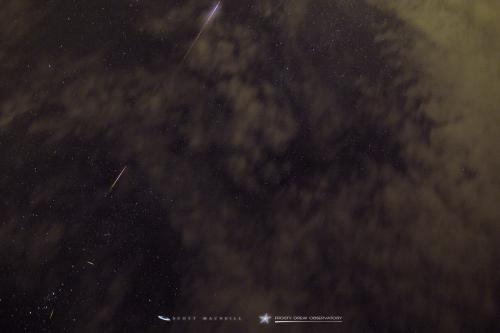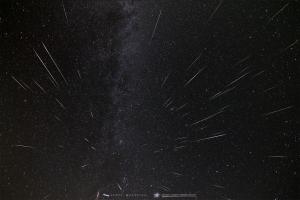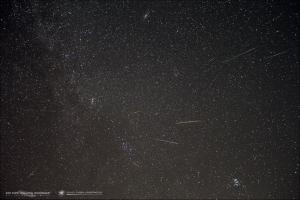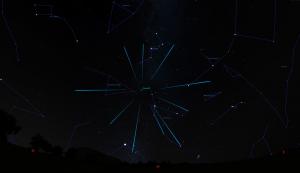Celebration of Space - August 7, 2020
We often plan a rather large event for the annual Perseid Meteor Shower, though due to the current pandemic we have modified our plans for the 2020 Perseid shower event. We will host two consecutive events. One on Tuesday, August 11 and another on Wednesday, August 12. The peak night for 2020 is overnight August 11-12, though the Perseids put on a fantastic post peak showing. Often producing a higher rate of meteor activity on the night after the peak. Both events will be ticketed events and tickets will have to be acquired in advance. At the time of writing we are planning to make 240 tickets available each night. With tickets only applicable for the night listed on the ticket. The event will start at 8:30 pm and go until about midnight. Telescopes will be setup in the observatory courtyard until about 10:30 pm with views of Jupiter, Saturn, and several objects along the Milky Way galactic plane. The large fields adjacent to the Science Center and Sky Theatre facilities will be available to lay out under the stars and observe the meteor shower.
The Perseid Meteor Shower is a product of Comet 109P/Swift-Tuttle, which is a periodic comet with an orbital period of 133 years. As Comet Swift-Tuttle orbits the Sun, it leaves behind a debris field of dust-sized pieces of ice. Some of this debris is larger, from rice-sized up to basketball-sized, which give us those super bright fireball meteors. This debris field crosses Earth’s orbit. As Earth orbits through the debris field every August, these ice particles get caught in Earth’s gravity and enter the atmosphere at a rate of 37 miles per second. Once encountering the mass of Earth’s atmosphere, these small particulates burn up and streak across the sky. During the peak night(s), Earth passes through the densest part of the debris field.
A meteor shower gets its name from the constellation that all meteors appear to originate, or radiate, from. In this case the radiant point of the Perseid shower is the dimmer star Miram in the constellation Perseus. The best time to view a meteor shower is when the radiant point is well above the horizon, and the Moon is below the horizon. Additionally, the clearer the sky is, the better the show. Under all of these conditions, you can expect upwards of 100 meteors per hour from the Perseids. This year, we have the waning crescent Moon rising around 12:30 pm. Which will give us a good window of viewing before moonrise, though the radiant point at that time will be lower on the horizon. If the sky is clear, we may see about 60 meteors per hour from this year’s Perseids. Though we also have the Alpha Capricornids happening, which will bring a slight increase in rates as well.
Regarding our event, please note that all current plans are considered tentative and several dynamics, including weather, quarantines, and new mandates can change our plans. The best place to go for updates is the Perseid Meteor Shower event page. We will post ticket acquisition links to that page on the day before the event if weather is looking acceptable.
Let’s hope for a clear sky and for a fabulous night of shooting stars at Frosty Drew Observatory this week, and celebrate the Dog Days of Summer with one of the best meteor showers of the year.
-Scott
- Author:
- Scott MacNeill
- Entry Date:
- Aug 7, 2020
- Published Under:
- Scott MacNeill's Columns





